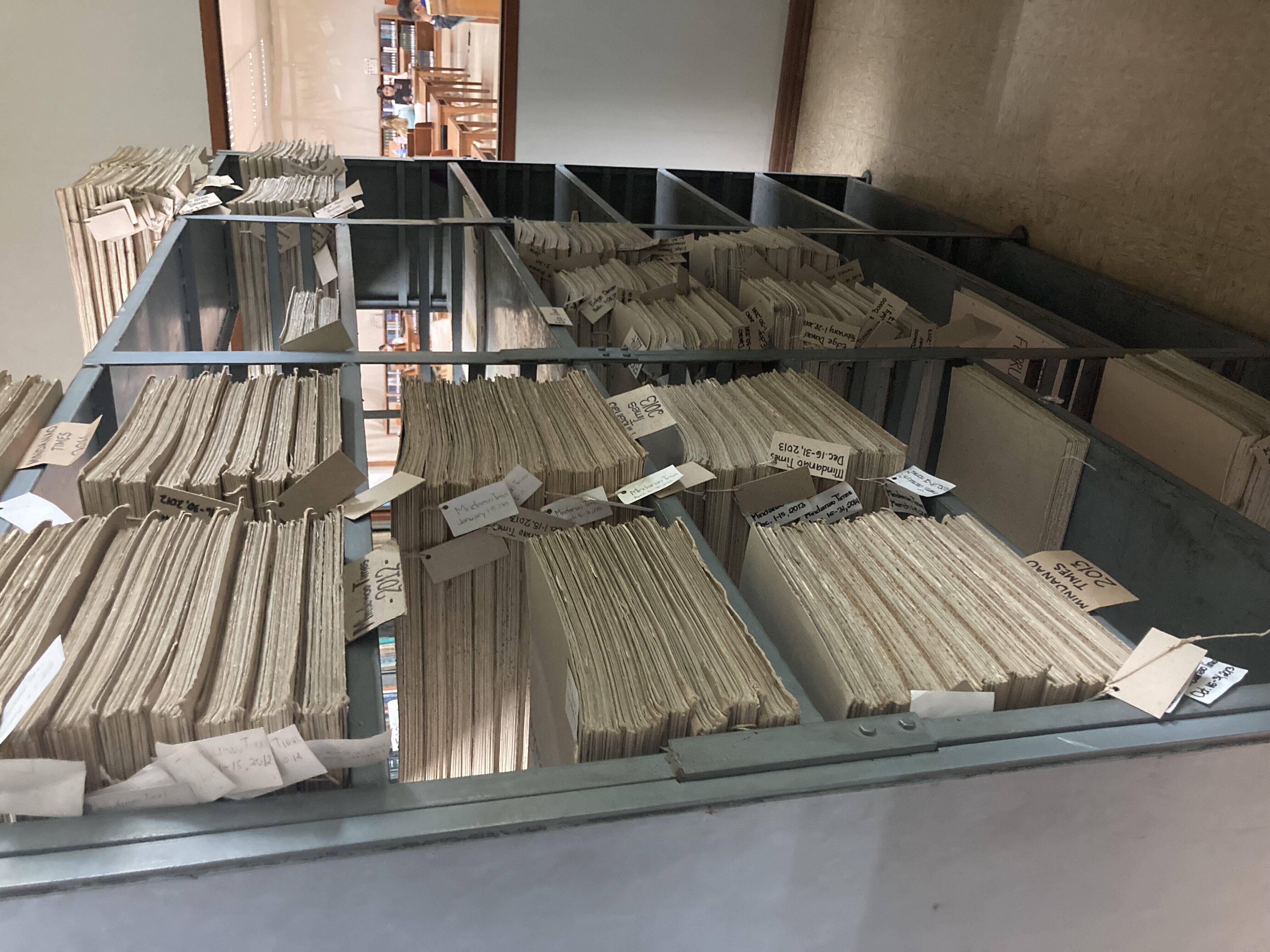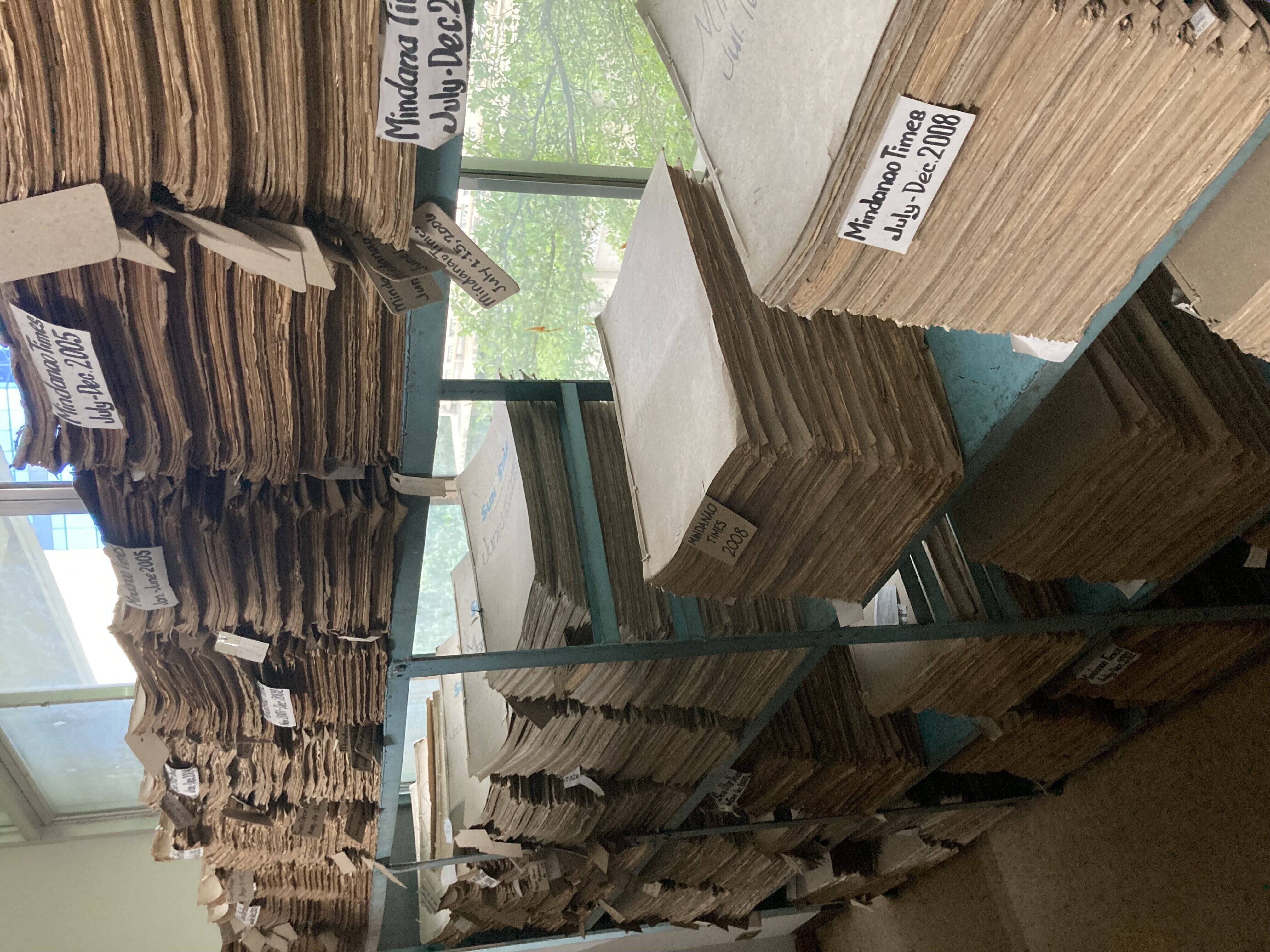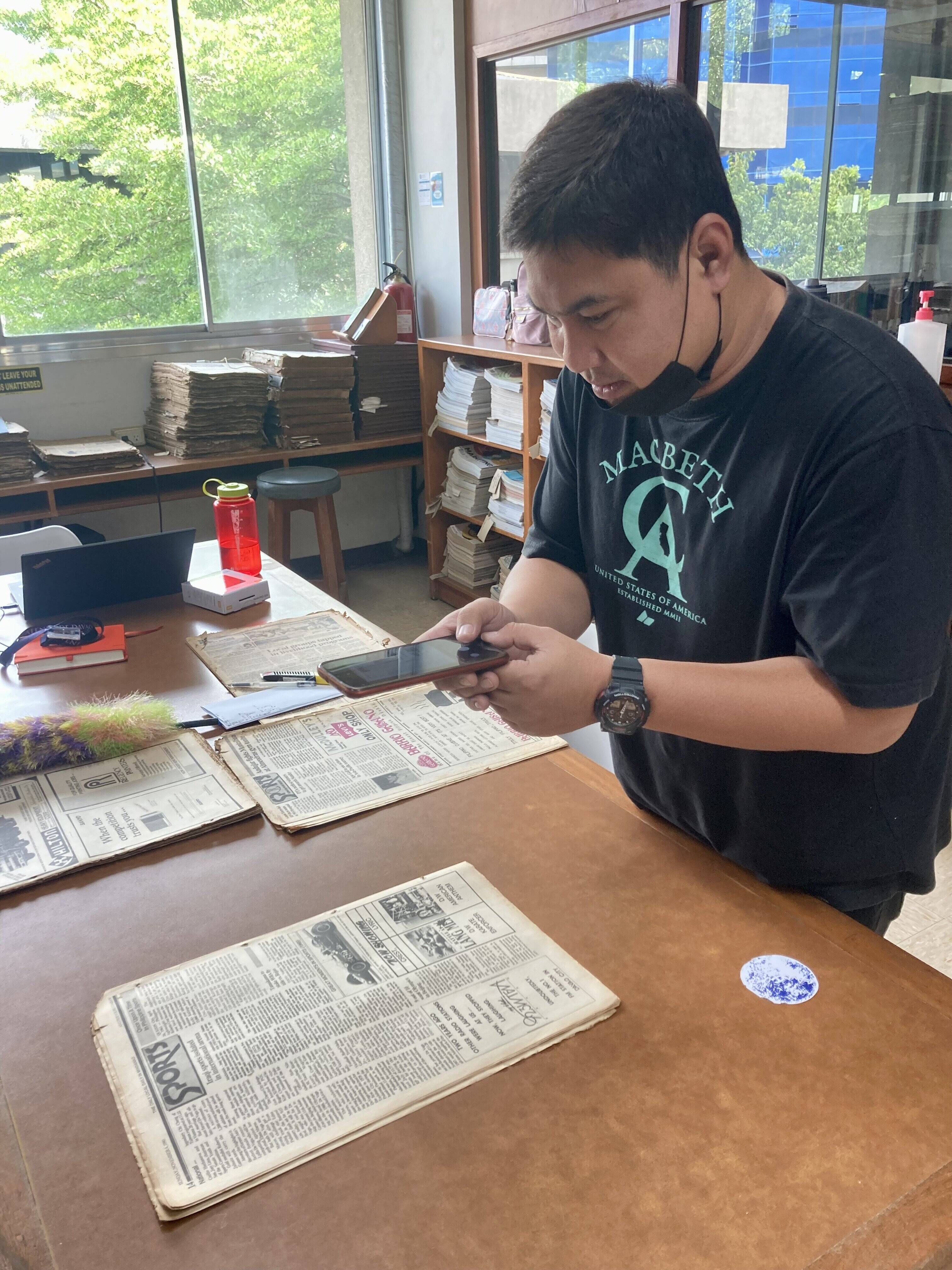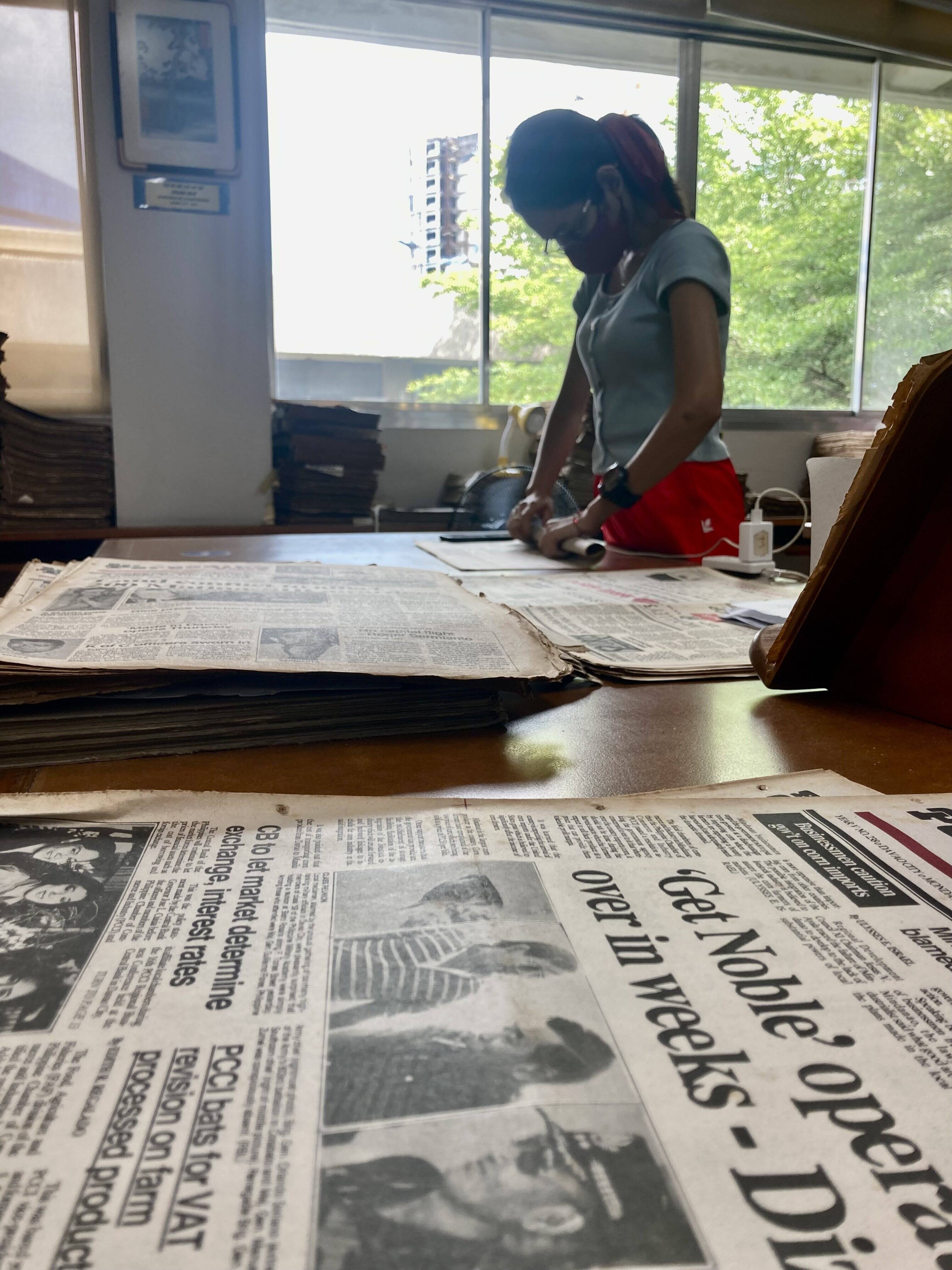What's in the library?
Fully searchable issues of the
Mindanao Times,
San Pedro Express,
Mindanao Daily Mirror,
Peryodiko Dabaw,
Mindanao Mirror Bulletin, and
SunStar Davao...
... published between
1972
and
2016...
... totalling 287,546 pages and 15,055 issues.
This graph is interactive Click on outlets to add or subtract them from the display
Background
This project responds to a basic problem: it is awfully difficult to learn about the recent history of Davao City. Since 2016, Davao has become one of the best known cities in the Philippines, thanks largely to the controversial reputation of former Mayor Rodrigo Duterte. Duterte ascended to the Philippine presidency in 2016 following a landslide win at the polls, and he immediately came under scrutiny because of his government's anti-crime campaigns. Davao City, where he had implemented similar programs since 1988, became a touchstone in press reports and academic articles. Ominous references to the Davao Death Squad abounded. But the vast majority of what was written about Davao during this time lacked even a hint of context regarding Davao City's broader history in the late 20th century. This made it difficult for even the most well-intentioned journalists and academics to reach beyond the violence-laden cliches that have defined Davao City (and much of the southern Philippines) for generations. As a result, a comprehensive history of Davao City in the late 20th century has yet to be written. Reconstructing that period will require careful analysis and access to large numbers of primary sources, but these remain in short supply in the southern Philippines.I began digitizing Davao City newspapers in 2018 as part of my preliminary dissertation research, which focuses on the economic history of Davao City in the late 20th century. In 2023, thanks to the generous financial support of my department and the Center for Southeast Asian Studies, I expanded my research to include the periodicals collection at the Ateneo de Davao, the premier university in the southern Philippines. The Ateneo's collection is a gold mine: thousands of issues of local newspapers going back several decades, covering five of the city's largest newspapers. To their great credit, the library's staff has kept these resources safe and well-preserved for decades. As of early 2023, however, the collection's long-term survival seemed uncertain, threatened by limited shelf space and inadequate climate control in the archives. Without proper attention, the Ateneo's collection would eventually degrade, as many newspapers already had. Pages would fade, tear, and crumble, and with them would go one of the best ways we have of learning about Davao City's recent past.
The website you're looking at now is my contribution to the preservation of that history. Between March and August 2023, I funded and directed the work of six research assistants at the Ateneo who scanned more than 250,000 pages from the library's collection. I took those scans and made them searchable, then I built the website you're looking at now. This library is critical to my own doctoral research, but I hope it can be useful to you as well. More than anything, I hope it inspires you to find your own way to contribute to the preservation of local history, especially in the Philippines.






Budget and cost details
By far the largest cost to create this library was the labor costs for scanning. That aside, the total upfront cost was less than 500 USD.- Scans were made using each research assistant's personal mobile phone, all of which had high resolution cameras. This eliminated the need to purchase DSLRs or flatbed scanners.
- Text was extracted from the scans using a prebuilt model from Microsoft's Azure Document Intelligence at a rate of 1.50 USD per 1,000 pages. This service was much more accurate than tesseract, an open source tool, which struggled to read small, faded, and often messy newspaper print. The total bill from Microsoft for text extraction was roughly 400 USD.
- The text, images, and metadata were organized using PostgreSQL, a free and open source relational database.
- This website was built using Django, a free Python framework for web development, and hosted on Heroku, a cloud platform with a low-cost entry-level tier.
Special Thanks
This project would not have been possible without continuing support from the following:- All the library staff at the Ateneo de Davao, led by Director Ms. Fretzie A. Fajardo and Periodicals Librarian Ms. Noemi Feca
- Ang aking mga masisipag na katrabaho, sina Ariane, Jeeber, Em, My, Jay, Rosie, at Jay-ar!! 💪💪💪
- Mindanao Times
- Department of History, University of Wisconsin-Madison
- Center for Southeast Asian Studies, University of Wisconsin-Madison
- Institute for Regional and International Studies, University of Wisconsin-Madison
🚨 Disclaimers 🚨
- All of the issues included in this database remain under copyright by the original copyright holders. The scans are being offered here to a small number of academic researchers on a temporary and limited basis to help encourage interest in digital preservation. If you own the copyright to one of these newspapers and you want me to remove your paper from the website, please email me and I will gladly do so.
- This website is still being developed and is likely to change significantly in the near future.
- I'm a historian by training, not a programmer, so my apologies in advance for any jaw-dropping bugs.
